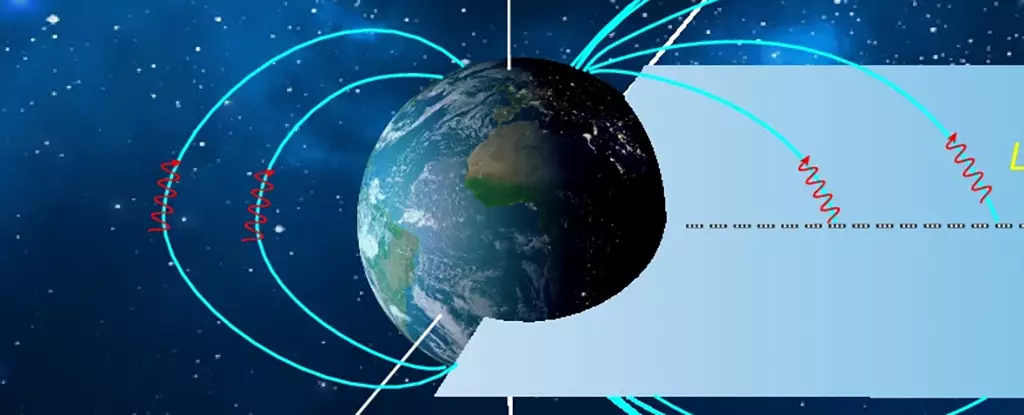For decades, astronomers and astrophysicists have been captivated by the strange, melodic echoes of the cosmos. Among these are choruses—peculiar bursts of electromagnetic radiation whose sounds, when transformed into audio, resemble birds chirping. The recent discovery of these signals in unanticipated regions of space has reignited intrigue, forcing scientists to re-examine established theories regarding their origin and significance. The phenomenon highlights not only the complexity of electromagnetic interactions in our universe but also challenges existing paradigms about how and where these waves can be generated.
Traditionally, chorus waves were thought to thrive within the protective embrace of Earth’s magnetic field, particularly at distances of approximately 51,000 kilometers (about 31,690 miles) where the magnetic properties resemble a well-defined dipole. This neat magnetic topology was believed crucial for generating the plasma instabilities necessary for chorus wave production. However, a groundbreaking study has detected similar electromagnetic bursts at a staggering 165,000 kilometers (around 102,526 miles) from Earth, an area with a significantly distorted magnetic environment. This finding suggests that the production of chorus waves is not as closely linked to ideal magnetic configurations as previously accepted.
The implications of this revelation are profound, opening avenues for new research into the behavior of plasma across varied environments in space. As the researchers pointed out, “Such similarities indicate that their generation is not uniquely determined by the local environment,” expanding our understanding of where these phenomena might occur and indicating that they could emerge in a variety of cosmic settings.
One noteworthy aspect of this recent research focuses on a previously theorized process linked to chorus waves. The study provides tangible evidence for the transfer of energy between plasma particles and these waves in areas known as electron holes—regions marked by a scarcity of electrons. The observations confirm the theory of electron cyclotron resonance, where the frequencies of electrons and waves resonate, amplifying energy transfer and producing distinct chirping patterns.
By examining high-resolution imagery from the NASA Magnetospheric Multiscale (MMS) mission, scientists were able to identify these electron holes in situ, marking a pivotal moment in understanding chorus waves. Such findings not only validate prior predictions but also illuminate the fundamental processes behind some of space’s most powerful electromagnetic phenomena.
Implications Beyond Earth
Chorus waves are not exclusive to our planet; they are a universal phenomenon, observable on other celestial bodies, including Mars, Jupiter, and Saturn. This raises intriguing questions about the broader implications of these discoveries for understanding magnetic field interactions across the universe. As these waves contribute significantly to Earth’s radiation belts and pose potential risks to satellite operations, understanding their patterns and behaviors is of utmost importance.
Research into chorus waves provides invaluable insight into a range of astrophysical processes, including energy transport in various space environments and the dynamics of plasma behavior in non-Earth settings. “Our observations may help to resolve long-standing controversies regarding chorus emissions,” the researchers indicated, hinting at the potential for more cohesive theories in understanding space weather and electromagnetic interactions that govern our universe.
The investigation of chorus waves underscores a thrilling frontier in astronomy, challenging scientists to rethink long-held beliefs about electromagnetic phenomena in space. As these mysterious waves draw attention to the complexity of the cosmic environment, they simultaneously beckon for deeper examination of the interplay between gravitational and magnetic forces shaping our universe. These discoveries pave the way for further explorations, expanding our knowledge and ushering in a symphony of understanding about the vast, uncharted territories of outer space. It is clear that the chirping signals are much more than mere sounds; they are critical threads in the fabric of cosmic interaction.


Leave a Reply